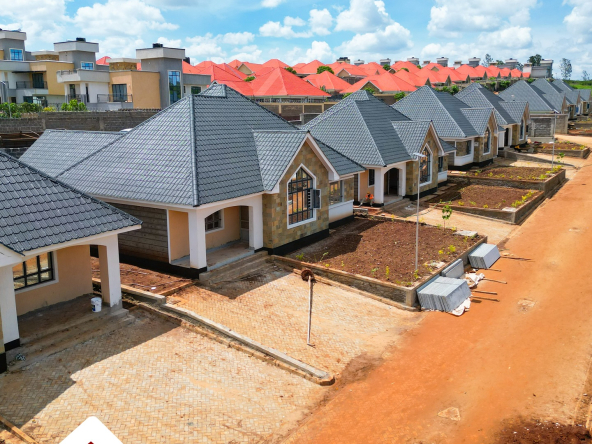The demolition of apartments in Umoja 2 Kwa Chief recently reignited debate about encroachment on public land in Nairobi. For years, road reserves, riparian zones, and utility corridors have been treated as free land by opportunistic developers and desperate buyers.
But the bulldozers always return. And when they do, millions of shillings in investments are lost, tenants are displaced, and trust in the real estate sector takes another hit.
Why does this cycle keep repeating, despite laws, zoning maps, and decades of warnings?
Contact Us
- Park Suites, 44 Parklands Road, Ground Floor, Suite 1, Willstone Homes
- +254711082011
- [email protected]
Read Also: Balancing Density with Liveability: Can Nairobi’s Growth Be Sustainable?
Why Developers Encroach on Public Land
High Demand for Housing
Nairobi faces a housing deficit of over 200,000 units annually (KNBS). Road reserves and riparian land appear as “cheap plots” to speculative developers who see an opportunity to meet demand without high land acquisition costs.
Weak Enforcement
Building approvals are sometimes issued without thorough site verification. Corruption at county and national levels allows illegal structures to pass inspections, creating a false sense of legitimacy.
Buyer Pressure
Many buyers prioritize price over due diligence. The desperation to “own a house in Nairobi” often blinds them to location risks, making them vulnerable to exploitation.
Calculated Risk by Developers
Perhaps the most troubling factor is that some developers knowingly build on public land. Their strategy is a calculated gamble: finish construction, rent or sell units, and make returns before authorities act. By the time Nairobi road reserve demolitions or riparian clearances happen, the developer has often pocketed profits while innocent buyers and tenants are left counting losses.
Read Also: Kenya’s Digital Divide in Housing: Smart Homes for the Wealthy, Exclusion for the Poor
The Ripple Effects
- Demolitions & Displacement: Families and tenants lose homes overnight, often without compensation.
- Infrastructure Blockage: Roads, drainage, and utility corridors are obstructed, worsening traffic congestion and flooding.
- Environmental Damage: Riparian land encroachment in Kenya contributes to recurring floods in Nairobi estates like South C, Ruai, and Umoja.
- Market Uncertainty: Investors lose confidence when entire apartment blocks are razed, making Nairobi’s housing market riskier.
The Role of Policy & Governance
Existing Laws
Kenya’s Physical and Land Use Planning Act (2019) and the Water Act prohibit construction on riparian land and road reserves.
Weak Mapping Systems
Lack of updated digital land maps leads to overlapping claims and confusion, exploited by land speculators.
Ad Hoc Enforcement
Demolitions often happen reactively, when public pressure mounts, rather than as part of a preventive system.
Read Also: Aging Population & Senior Living Estates: Is Kenya Ready for the Silver Generation?
Lessons from the Recent Umoja 2 ( kwa chief ) Demolitions
The Umoja 2 Kwa Chief demolitions are a stark reminder that “cheap land” often comes at an expensive cost:
- Buyers lose homes.
- Developers lose millions.
- Nairobi suffers from disorderly growth.
Yet, across Nairobi and its satellite towns, many more buildings sit on road reserves, under power lines, or along rivers. Without systemic reform, real estate demolitions in Nairobi will remain a recurring feature.
The Way Forward
To stop the cycle of public land misuse in Nairobi, three steps are critical:
1. Digitized Land Registry
Map all road reserves, riparian zones, and utility corridors with public access to eliminate excuses and reduce fraudulent sales.
2. Stronger Enforcement
Approvals must be site-verified, and rogue officials enabling Kenya illegal construction should face legal action.
3. Buyer Awareness
Public campaigns should urge buyers to cross-check land details with the National Construction Authority (NCA) and county planning offices before purchase.
4. Developer Liability for Demolitions
Demolitions should happen at the developer’s cost — not taxpayers’ or tenants’. This measure will discourage speculative construction and shift accountability to those who gamble with Nairobi’s urban future
Encroachment on public land in Nairobi is not just a legal matter — it is a planning, environmental, and human tragedy. The demolitions in Umoja 2 highlight a cycle the city cannot afford to repeat.
The solution lies in transparent land management, stricter enforcement, and smarter urban planning. Only then can Nairobi safeguard its public spaces, protect families and investors, and achieve orderly growth that respects both law and community.
Choose Orderly Growth. Choose Willstone Homes
At Willstone Homes, we don’t just build houses — we design gated communities that respect urban planning, safeguard public spaces, and create lasting value.
Its all secure, legal and sustainable.
👉 Invest with confidence today. Let’s build your future together.




